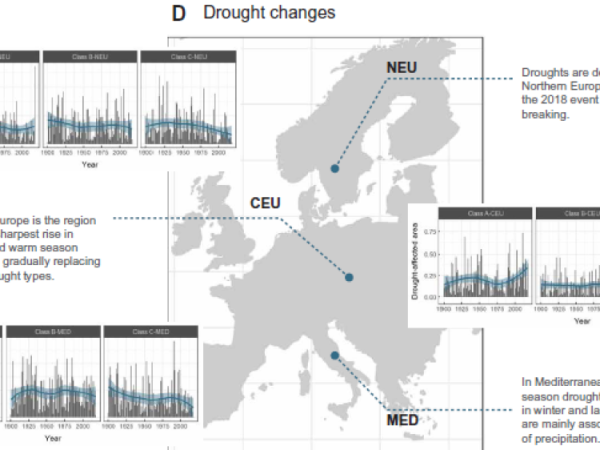Introduction
There are plenty of studies assessing the severity of recent European droughts. However, most of these studies evaluate the droughts within the context of hydroclimatic conditions of the second half of the 20th century. It is thus possible, that recent European drought events are less (or more) severe than previously thought. The XEROS project aims at (1) assessing the extremity of recent European drought events in the perspective of long (i.e., 500-year) benchmark period and (2) improving the process understanding of drought genesis. The underlying analysis will employ a multi-model reconstruction of hydrologic variables using the palaeoclimatic reconstructed driving data. Current state-of-the-art hydrologic/land surface models will be used to estimate spatio-temporal dynamics of the surface and subsurface water component. This will enable an improved understanding of historical characterisation of large scale drought events and exploratory analysis of the governing atmospheric parameters influencing the genesis of droughts. Better understanding of the uncertainties in the past will allow to project future hydroclimatic conditions across Europe more reliably. This will be achieved by constraining the (future) climate model simulations by the available (past) observation-based reconstructed hydroclimatic variables. The XEROS project builds upon a modelling infrastructure which has been recently established across Europe by our team. Additionally, this project aims to bring together two research groups of complementary scientific knowledge: the German-based applicants (UFZ) have strong expertise on understanding and modelling the complex interaction of land-surface hydrologic processes, and the Czech-based applicants (CULS) having strong scientific background in statistical analysis of hydrologic and climate variability.
Findings
The rise of compound warm-season droughts in Europe
Science Advances | Markonis et al. [2021] Drought is one of the main threats to food security and ecosystem productivity. During the past decades, Europe has experienced a series of droughts that caused substantial socioeconomic losses and environmental impacts. A key question is whether there are some similar characteristics in these droughts, especially when compared…
Keep readingAtmospheric circulation as a factor contributing to increasing drought severity in Central Europe
Journal of Geophysical Research: Atmospheres | Lhotka et al. [2020] Long‐lasting and severe droughts seriously threaten agriculture, ecosystems, and society. Summer 2018 in central Europe was characterized by unusually persistent heat and drought, causing substantial economic losses, and became a part of a several years long dry period observed across this region. This study assesses…
Keep readingIncreased future occurrences of the exceptional 2018–2019 central European drought under global warming
Scientific Reports | Hari al. [2020] Since the spring 2018, a large part of Europe has been in the midst of a record-setting drought. Using long-term observations, we demonstrate that the occurrence of the 2018–2019 (consecutive) summer drought is unprecedented in the last 250 years, and its combined impact on the growing season vegetation activities…
Keep readingAn Index-Flood Statistical Model for Hydrological Drought Assessment
Water | Strnad et al. [2020]
Keep readingRepresentation of European hydroclimatic patterns with self-organizing maps
The Holocene | Markonis and Strnad [2020] Self-organizing maps provide a powerful, non-linear technique of dimensionality reduction that can be used to identify clusters with similar attributes. Here, they were constructed from a 1000-year-long gridded palaeoclimatic dataset, namely the Old World Drought Atlas, to detect regions of homogeneous hydroclimatic variability across the European continent. A…
Keep reading